1.1: Sociological Perspective and Sociological Imagination
- Last updated
- Save as PDF
- Page ID
- 46520

- Erika Gutierrez, Janét Hund, Shaheen Johnson, Carlos Ramos, Lisette Rodriguez, & Joy Tsuhako
- Long Beach City College, Cerritos College, & Saddleback College via ASCCC Open Educational Resources Initiative (OERI)
"I can't breathe." George Floyd repeated this phrase at least 20 times while held on the ground in police custody on May 25, 2020 (Singh, 2020). During the 9 1/2 minutes in which Officer Derek Chauvin pressed his knee on Floyd's neck depriving him of his breath, Floyd repeatedly called out "Mama," though his mother was already deceased. Following Floyd's lynching, multiracial Black Lives Matter mass protests erupted immediately in Minneapolis, Los Angeles, New York, Portland, and countless cities and towns throughout the U.S. and the world. Protesters pushed for justice and reforms to challenge systemic racism in policing, including defunding and disbanding police departments. In many cases, though not all, police unleashed riot gear and tear gas on the mostly non-violent protesters. In response to the mass protests and in a rare case of police accountability of excessive use of force, Chauvin and three other Minneapolis police officers were fired and charged with Floyd's murder.
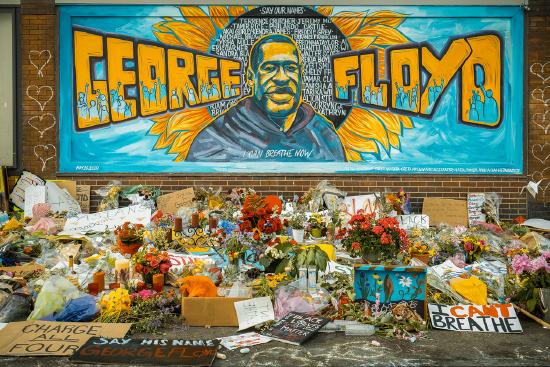
The Problem of the Color Line
The problem of the 20th century is the problem of the color line,
W.E.B DuBois (1868-1963) wrote in The Souls of Black Folk in 1903. A civil rights activist and the first African American to earn a PhD in Sociology from Harvard, DuBois wrote about the socioeconomic and sociopolitical circumstances of African Americans following the Civil War and post-Reconstruction, amidst Jim Crow America. Answering his own question about how it feels to be a problem, DuBois wrote:
After the Egyptian and Indian, the Greek and Roman, the Teuton and Mongolian, the Negro is a sort of seventh son, born with a veil, and gifted with second-sight in this American world, — a world which yields him no self-consciousness, but only lets him see himself through the revelation of the other world. It is a peculiar sensation, this double-consciousness, this sense of always looking at one’s self through the eyes of others, of measuring one’s soul by the tape of a world that looks on in amused contempt and pity. One feels his two-ness, — an American, a Negro; two souls, two thoughts, two unreconciled strivings; two warring ideals in one dark body, whose dogged strength alone keeps it from being torn asunder. The history of the American Negro is the history of this strife, — this longing to attain self-conscious manhood, to merge his double self into a better and truer self. In this merging he wishes neither of the older selves to be lost. He does not wish to Africanize America, for America has too much to teach the world and Africa; he does not wish to bleach his Negro blood in a flood of white Americanism, for he believes—foolishly, perhaps, but fervently—that Negro blood has yet a message for the world. He simply wishes to make it possible for a man to be both a Negro and an American without being cursed and spit upon by his fellows, without losing the opportunity of self-development.
DuBois edited The Crisis during the Harlem Renaissance, and he was an early member of the Niagara Movement, an organization dedicated to socio-political reform for African Americans which later became the NAACP (National Association for the Advancement of Colored People). DuBois was the first African American president of the American Sociological Society. As a young man, he believed in the promise of the United States as a country where all people could be equal and free.
It appears that the problem of the 21st century is still the problem of race. Yet, as intersectional scholar Kimberle Crenshaw explains, our frames should include an analysis of both gender and race to better understand the complexity of the human condition.
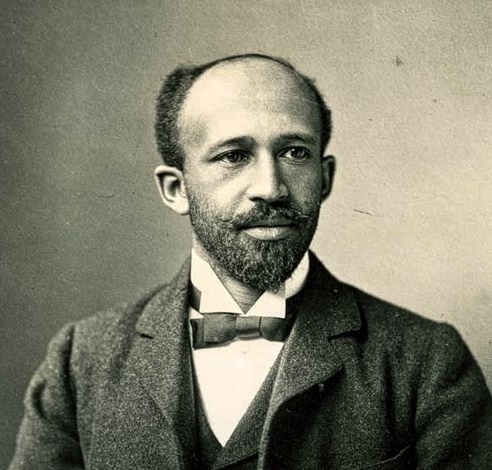
What is Sociology?
Sociology is the systematic study of society and social interaction. In order to carry out their studies, sociologists identify cultural patterns and social forces and determine how they affect individuals and groups. One way sociology achieves a more complete understanding of social reality is through its focus on the importance of the social forces affecting our behavior, attitudes, and life chances. This focus involves an emphasis on social structure, the social patterns through which a society is organized. Sociology provides a lens for understanding the human condition and the structural forces that influence our behavior and attitudes.
Yet, we are often not aware of the impact of these societal forces. Consider that most Americans probably agree that we enjoy a great amount of freedom. And yet perhaps we have less freedom than we think. Although we have the right to choose how to believe and act, many of our choices are affected by our society, culture, and social institutions in ways we do not even realize. Perhaps we are not as distinctively individualistic as we might like to think. The struggle over state shut-downs, social distancing and mandatory masks in public, threw this debate over freedom into the spotlight during the COVID-19 pandemic.
Further, take the right to vote. The secret ballot is one of the most cherished principles of American democracy. We vote in secret so that our choice of a candidate is made freely and without fear of punishment. That is all true, but it is also possible to predict the candidate for whom any one individual will vote if enough is known about the individual. Again, our choice (in this case, our choice of a candidate) is affected by many aspects of our social backgrounds and, in this sense, is not made as freely as we might think.

To illustrate this point, consider the 2008 presidential election between Democrat Barack Obama and Republican John McCain. Suppose a room is filled with 100 randomly selected voters from that election. Nothing is known about them except that they were between 18 and 24 years of age when they voted. Because CNN exit poll data found that Obama won 66% of the vote from people in this age group, a prediction that each of these 100 individuals voted for Obama would be correct about 66 times and incorrect only 34 times. Someone betting $1 on each prediction would come out $32 ahead ($66 – $34 = $32), even though the only thing known about the people in the room is their age.
Now let’s suppose we have a room filled with 100 randomly selected white men from Wyoming who voted in 2008. We know only three things about them: their race, gender, and state of residence. Because exit poll data found that 67% of white men in Wyoming voted for McCain, a prediction can be made with fairly good accuracy that these 100 men tended to have voted for McCain. Someone betting $1 that each man in the room voted for McCain would be right about 67 times and wrong only 33 times and would come out $34 ahead ($67 – $33 = $34). Even though young people in the United States and white men from Wyoming had every right and freedom under our democracy to vote for whomever they wanted in 2008, they still tended to vote for a particular candidate because of the influence of their age (in the case of the young people) or of their gender, race, and state of residence (white men from Wyoming).
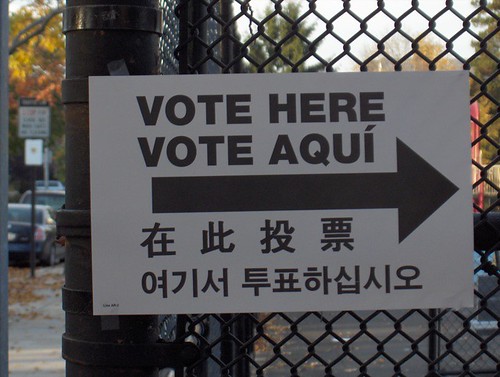
Consider the lead-up to the 2020 Presidential campaign. Former President Donald Trump stoked racial strife and polarization during his presidency and through this campaign cycle. With his positive references to white power during the Charlottesville protests and his infamous tweets chastising protesters as thugs, blaming COVID-19 on China, or refusing to demand that the far-right Proud Boys "stand down," he catered to his base who hold more polar views from the rest of the nation, including more staunch opposition to immigration. With unwavering support, nearly 80% of white Evangelical voters checked the box for Trump (Gjelten, 2020). As the votes of the 2020 election have been tallied, Joe Biden and running mate Kamala Harris, the first-ever woman of color on a major political party ticket, won the popular vote by more than 7 million votes (Sullivan & Agiesta, 2020). Though there were unique niches, and overall increasing numbers, of voters of color supporting Trump, such as Cuban and Venezuelan Americans in Florida, the overwhelming majority of people of color cast a vote for the Biden-Harris ticket, including Latinx and Native American populations in Arizona who helped turn the state blue. A majority of men voted for Trump while the majority of women voted for Biden. Although Trump made gains with all groups of women from 2016 to 2020 elections, a consistently high majority of Black women cast their vote for the Biden-Harris ticket. By contrast, the overwhelming majority of the white electorate cast a vote for Trump, though a smaller percentage of white men voted for Trump as compared to 2016. Similar to four years earlier, race and gender (and religion) proved to be influential factors in voter tendency in 2020.
Yes, Americans have freedom, but our freedom to think and act is constrained at least to some degree by our social structures - by society’s standards and expectations and by the many aspects of our social backgrounds. This is true for the kinds of important beliefs and behaviors just discussed, and it is also true for less important examples. What color of mask did you wear during COVID-19? Was it a designer mask? Did it have a message? What social forces impacted your choice of mask?
The social structure plays an integral role in the social location (i.e., place or position) people occupy in society. Your social location is a result of cultural values and norms from the time-period and place in which you live. Culture affects personal and social development including the way people will think or behave. Cultural characteristics pertaining to age, gender, race, education, income, religion, sexuality, disability and other social factors influence the location people occupy at any given time.
Furthermore, social location influences how people perceive and understand the world in which we live. People have a difficult time being objective in all contexts, because of their social location within cultural controls and standards derived from values and norms. Objective conditions exist without bias because they are measurable and quantifiable (Carl, 2013). Subjective concerns rely on judgments rather than external facts. Personal feelings and opinions from a person’s social location drive subjective concerns. The sociological imagination is a tool to help people step outside subjective or personal biography, and look at objective facts and the historical background of a situation, issue, society, or person (Carl, 2013).
Thinking Sociologically
The time period we live (history) and our personal life experiences (biography) influence our perspectives and understanding about others and the world. Our history and biography guide our perceptions of reality reinforcing our personal bias and subjectivity. Relying on subjective viewpoints and perspectives leads to diffusion of misinformation and fake news that can be detrimental to our physical and socio-cultural environment and negatively impact our interactions with others. We must seek out facts and develop knowledge to enhance our objective eye. By using valid, reliable, proven facts, data, and information, we establish credibility and make better decisions for the world and ourselves.
- Consider a socio-cultural issue you are passionate about and want to change or improve.
- What is your position on the issue? What ideological or value-laden reasons or beliefs support your position? What facts or empirical data support your position?
- What portion of your viewpoint or perspective on the issue relies on personal values, opinions, or beliefs in comparison to facts?
- Why is it important to identity and use empirical data or facts in our lives rather than relying on ideological reasoning and false or fake information
According to C. Wright Mills (1959), the sociological imagination requires individuals to “think themselves away” from examining personal and social influences on people’s life choices and outcomes. Large-scale or macrosociological influences help create an understanding about the effect of the social structure and history on people’s lives. Whereas, small-scale or microsociological influences focus on interpreting personal viewpoints from an individual’s biography. Using only a microsociological perspective leads to an unclear understanding of the world from biased perceptions and assumptions about people, social groups, and society (Carl 2013).
In The Sociological Imagination (1959), Mills presented his classic distinction between personal troubles and public issues. Personal troubles refer to a problem affecting individuals that the affected individual, as well as other members of society, typically blame on the individual’s own failings. Examples include such different problems as police brutality, immigration, mass incarceration, hate crimes, sexual harassment, and unemployment. Public issues, whose source lies in the social structure and culture of a society, refer to a social problem affecting many individuals. Thus problems in society help account for problems that individuals experience personally. Mills, feeling that many problems ordinarily considered private troubles are best understood as public issues, coined the term sociological imagination to refer to the ability to appreciate the structural basis for individual problems.
To illustrate Mills’s viewpoint, let’s use our sociological imagination to understand some important contemporary social problems. We will start with unemployment, which Mills himself discussed. If only a few people were unemployed, Mills wrote, we could reasonably explain their unemployment by saying they were lazy, lacked good work habits, and so forth. If so, their unemployment would be their own personal trouble. But when millions of people are out of work, unemployment is best understood as a public issue because, as Mills (1959) explained, “the very structure of opportunities has collapsed. Both the correct statement of the problem and the range of possible solutions require us to consider the economic and political institutions of the society, and not merely the personal situation and character of a scatter of individuals.” The unemployment rate rose dramatically during the severe economic downturn that began in 2008, yet had reduced to its lowest level before the COVID-19 pandemic. Once COVID-19 hit, millions of people in the U.S. lost their jobs through no fault of their own. While some individuals are undoubtedly unemployed because they are lazy or lack good work habits, a more structural explanation focusing on lack of opportunity and forced shut-downs is needed to explain why so many people were out of work as this book went to press. Though experienced as a personal trouble, unemployment can better be understood through analysis as a public issue. According to a Pew Research Center study, unemployment rates among African Americans have exceeded the unemployment rates of Euro Americans over the past six decades (Desilver, 2013). Current unemployment trends are no different.
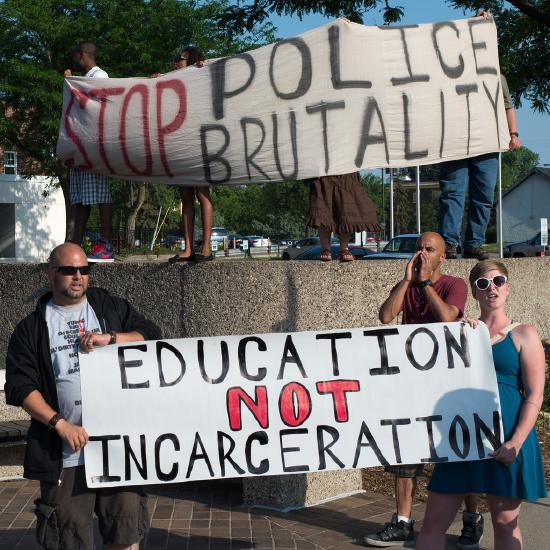
Next, we can consider the police brutality against African Americans and the Latinx Community. Emmett Till. Amadou Dialou. Aiyana Stanley-Jones. Trayvon Martin. Michael Brown. Eric Garner. Breonna Taylor. George Floyd. Andres Guardado. Sean Monterrossa. Each of these senseless killings (and countless more) have presented immense personal troubles for family and friends of these victims. However, the long historical timeline illustrates these combined murders tell a story about lynching, of structural racism and unequal policing and injustice against African Americans and the Latinx Community. Created by African American women, Alicia Garza, Patrisse Cullors, and Opal Tometi, the Black Lives Matter movement has called out the structural roots of this state sponsored violence.
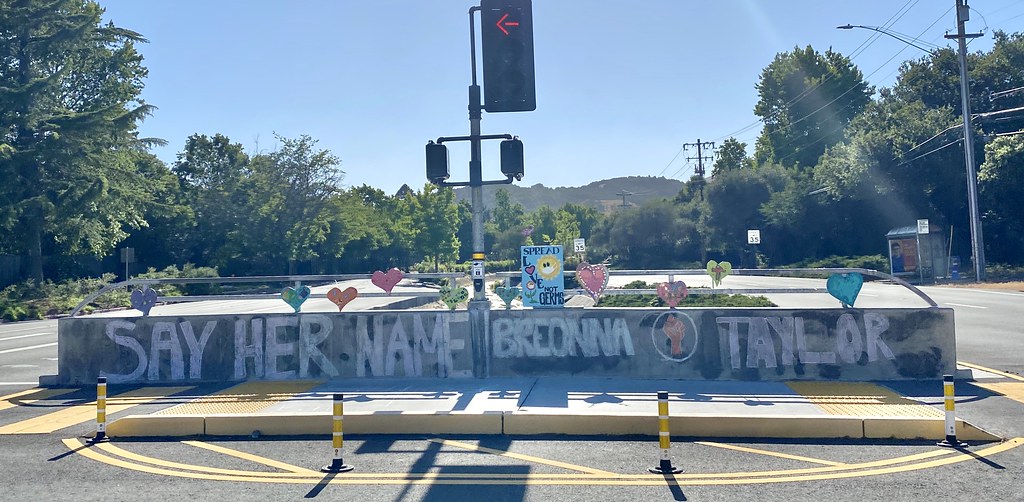
Finally, the global COVID-19 pandemic has presented the world with severe uncertainty. Personal troubles range from families devastated by the passing of a loved one, essential medical workers caring for COVID-19 patients on the frontline, and a shut-down of our public space that has confined many to their homes. Yet, an analysis of the unprepared public health system to manage this crises, lack of national political leadership, lack of access to (quality) health care in communities of color, combined with the high risk that poor communities face, illustrates the public issues surrounding the pandemic; economic and health care systems serve to only exacerbate the social inequalities that pre-dated COVID-19. Additionally, the rise of hate crimes against Asian American and Pacific Islander (AAPI) communities during COVID-19 further illustrates the how sociological imagination can be employed to consider the personal impact of these hate crimes as well as the public, structural roots of this racism.
Sociological Perspective
A key basis of the sociological perspective is the concept that the individual and society are inseparable. It is impossible to study one without the other. Incorporating a sociological perspective reminds us that we are always participating in something larger than ourselves. Using our sociological imagination, we can begin to see our micro, personal troubles in the context of macro, public issues. Perhaps then, we can better understand the complexity of our social life as well as the social change and resistance that may serve to improve the human condition.
Key Takeaways
- DuBois considered that the problem of the 20th century was the problem of the color line; sociologists consider that the problems of the 21st century continue to revolve around race.
- Sociology provides a lens for understanding the human condition and the structural forces and structures that influence our behavior, attitudes, social interaction, and society at large.
- Using the tools of the sociological imagination and the sociological perspective help people to understand we are always participating in something larger than ourselves.
Contributors and Attributions
- Hund, Janét. (Long Beach City College)
- Rodriguez, Lisette. (Long Beach City College)
- Sociology (Barkan) (CC BY-NC-SA 4.0) contributed to Sociological Perspective
- A Career in Sociology (Kennedy) (CC BY-NC-SA 4.0)
- Introduction to Sociology 2e (OpenStax) (CC BY 4.0)
Works Cited
- Cable News Network. (2008). CNN Exit Poll.
- Carl, J.D. (2013). Think Social Problems. 2nd ed. Uppers Saddle River, NJ: Pearson Education, Inc.
- Desilver, D. (2013, August 21). Black unemployment rate is consistently twice that of whites. Pew Research Center.
- DuBois, W.E.B. (1903).The Souls of Black Folk. New York, NY: Bantam Books.
- Galston, W. (2020, June 3). New polling: Eroding support from white working-class women threatens Trump’s reelection. The Brookings Institution.
- Gjelten, T. (2020, November 8). 2020 faith vote reflects 2016 patterns. National Public Radio.
- Mills, C.W. (1959). The Sociological Imagination. New York, NY: Oxford University Press.
- Singh, M. (2020, July 9). George Floyd told officers 'I can't breathe' more than 20 times, transcripts show.The Guardian.
- Sullivan, K. & Agiesta, J. (2020, December 4). Biden's popular vote margin over Trump tops 7 million. CNN.

